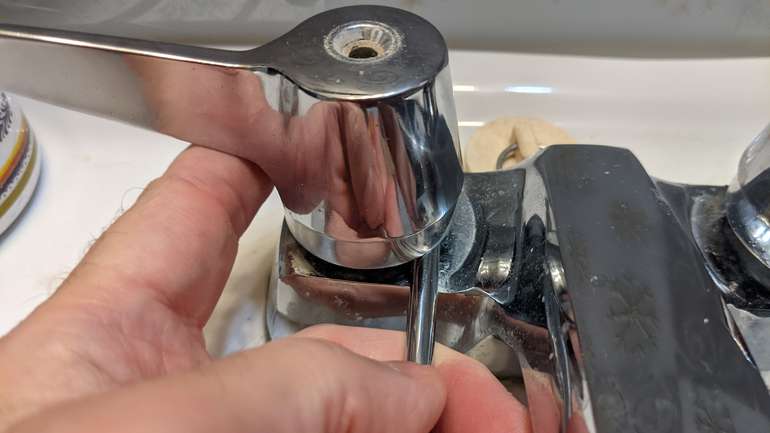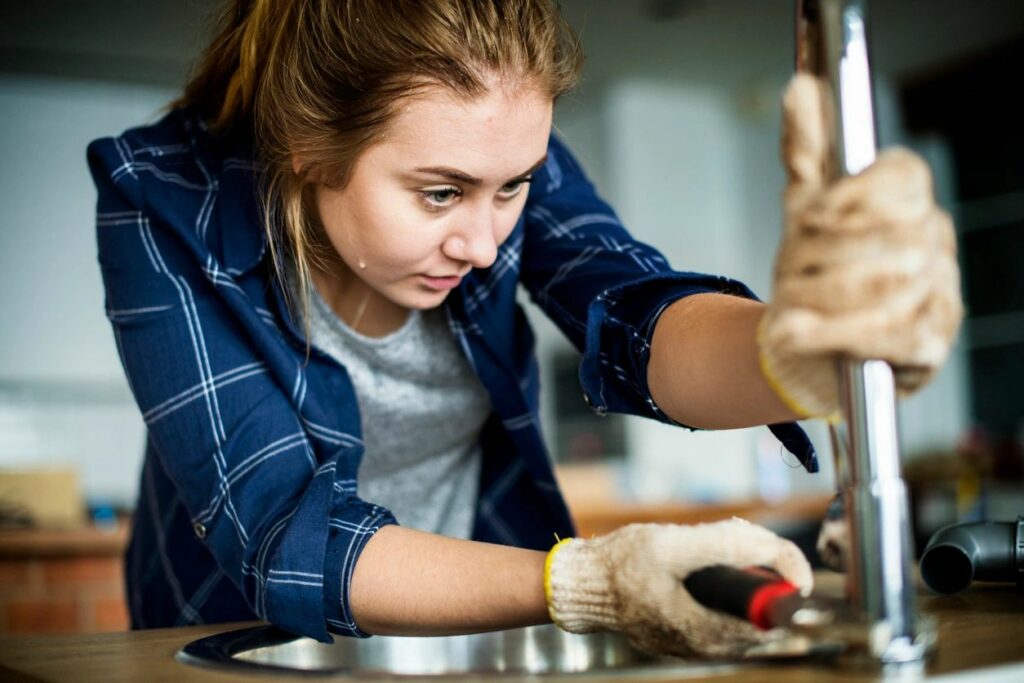Right here in the next paragraphs you can get a good deal of superb answers with regards to Why Are My Faucets Dripping (And Can I Fix It Myself)?.

Dripping taps may look like a minor inconvenience, however their effect surpasses simply the annoyance of the sound. From drainage to incurring unnecessary monetary costs and health and wellness risks, ignoring a trickling tap can bring about different consequences. In this article, we'll delve into why it's critical to address this typical family problem promptly and effectively.
Waste of Water
Environmental Effect
Dripping taps add significantly to water wastage. According to the Environmental Protection Agency (EPA), a solitary tap dripping at one drip per second can throw away more than 3,000 gallons of water annually. This not only stress water sources however likewise affects environments and wild animals depending on them.
Financial Expenses
Increased Water Bills
Past the environmental influence, leaking faucets can inflate water bills considerably. The built up wastage gradually converts into higher energy costs, which could have been prevented with prompt repairs.
Potential Building Damages
Moreover, prolonged leaking can bring about harm to components and surfaces bordering the tap. Water build-up can create staining, deterioration, and even structural issues if left neglected, resulting in additional repair work prices.
Wellness Concerns
Mold and Mold Development
The constant visibility of dampness from a leaking faucet creates a perfect setting for mold and mildew and mildew development. These fungis not just endanger interior air top quality however likewise posture wellness dangers, specifically for individuals with respiratory problems or allergies.
Waterborne Conditions
Stationary water in trickling faucets can end up being a breeding place for bacteria and various other microorganisms, increasing the risk of waterborne illness. Contaminants such as Legionella germs flourish in stagnant water, possibly bring about severe diseases when consumed or breathed in.
Do it yourself vs. Specialist Repair work
Benefits and drawbacks of Do It Yourself Fixing
While some might attempt to fix a trickling tap themselves, do it yourself repair work come with their own set of obstacles. Without correct knowledge and devices, DIY efforts can worsen the issue or result in incomplete repairs, lengthening the problem.
Benefits of Working With an Expert Plumber
Employing a specialist plumber makes certain that the underlying source of the trickling tap is resolved properly. Plumbing technicians possess the proficiency and devices to detect and repair faucet issues successfully, conserving time and decreasing the risk of more damages.
Step-by-Step Guide to Taking Care Of a Dripping Tap
Tools Needed
Prior to attempting to deal with a dripping faucet, collect the needed tools, including an adjustable wrench, screwdrivers, substitute parts (such as washers or cartridges), and plumber's tape.
Common Tap Issues and Their Solutions
Recognize the kind of faucet and the specific issue creating the drip. Common problems include worn-out washers, corroded shutoff seats, or malfunctioning O-rings. Describe manufacturer instructions or on the internet tutorials for step-by-step guidance on repair work.
Preventive Measures
Routine Maintenance Tips
To stop dripping taps, carry out regular maintenance such as cleaning up aerators, examining for leaks, and changing damaged components immediately. Additionally, take into consideration installing water-saving gadgets or updating to more efficient fixtures.
Relevance of Prompt Repairs
Attending to leaking taps as soon as they're seen stops further water wastefulness and prospective damage, eventually conserving both water and money in the future.
Influence On Residential Property Value
Understanding of Well-Maintained Property
Maintaining a home in good condition, including dealing with maintenance concerns like leaking faucets, boosts its viewed worth and desirability amongst prospective buyers or renters.
Influence on Resale Worth
Features with well-maintained plumbing components, consisting of faucets, command greater resale values in the real estate market. Resolving leaking faucets can contribute to a favorable impression throughout property assessments and settlements.
Environmental Duty
Specific Contribution to Conservation
Taking obligation for dealing with leaking taps straightens with more comprehensive initiatives toward water conservation and environmental sustainability. Every individual's actions jointly make a substantial influence on maintaining priceless resources.
Sustainable Living Practices
By prioritizing punctual repair services and adopting water-saving habits, people add to lasting living methods that benefit both existing and future generations.
Conclusion
Attending to a leaking tap goes beyond plain comfort; it's an essential action toward preserving water, lowering financial prices, and guarding health and wellness and building. Whether through DIY fixings or expert aid, taking action to deal with leaking faucets is a small yet impactful way to promote responsible stewardship of sources and contribute to a healthier, more lasting future.
Most Common Reasons for a Leaky Faucet and How to Stop the Drip
Whether it’s your kitchen faucet leaking or a bathroom faucet leaking, one leaky faucet can waste anywhere from three to 30 gallons of water every single day. If the constant drip-drip-drip doesn’t get your attention, your water bill will. The good news is that, by following a few simple steps, chances are pretty good you can fix the problem yourself.
Why is it dripping?
Before you start taking things apart, let’s break down some of the most common causes of a leaky faucet.
Bad O-ring.
A cartridge is a valve that controls the flow of water into the faucet spout. On cartridge faucets there’s an O-ring—the little disc attached to the stem screw that holds the faucet handle in place. If it’s loose or worn-out, it can cause your sink handle to leak. Of course, the cartridge itself could be worn out. If that’s the case, make sure you replace it with the exact same kind.
Corroded valve seat.
The valve seat connects the faucet and the spout. If the leak seems to be coming from the spout, it might be because a buildup of water sediment has corroded the valve seat.
Worn-out washers or seals.
A leaky spout could be caused by a bad washer that rests against the valve seat. It’s just a matter of time before friction takes its toll. It could also be the wrong size washer or one that’s been installed incorrectly. Water sediments can also corrode inlet and outlet seals.
Water pressure.
If the faucet only drips now and then, or when you turn the handles a certain way, you should probably check your home’s water pressure.
Loose or broken parts.
The adjusting ring and packing nuts in the stream screw can become loose over time, causing your sink handle to leak. Try tightening or replacing the packing nut. If the leak is coming from the pipes underneath the sink, you probably have a broken pipe or fitting. If that’s the case, you should definitely call a plumber.
Know your faucet.
Faucets come in a variety of types. Each one has its own assembly—and its own possible causes of leaks. Learning about the four most common kinds of faucets will help you know how to take them apart and make any repairs.
How to stop a leaky faucet
Fixing that leaky faucet doesn’t have to take a lot of time, money, or expertise. It’s usually a simple matter of replacing a worn-out washer or gasket, a loose O ring, or another part. Chances are really good you can do this yourself if you follow these simple steps.
Shut off the water.
Before you tackle the faucet, cut off the water supply to the sink. There should be one valve for hot and one for cold. Hand-turn them clockwise with your hands till they close. If there are no valves under the sink, head to the basement and shut off the main water supply to the house. Then turn on the faucet until it empties out the water that’s still in the line and you’re ready to start. It’s a good idea to cover the sink drain with a plug or a rag so you don’t lose any small pieces and parts while you’re working.

As a fervent reader on What Causes Leaky Faucets & How To Fix Them, I imagined sharing that piece of content was smart. So long as you enjoyed our post kindly remember to share it. Thank-you for going through it.